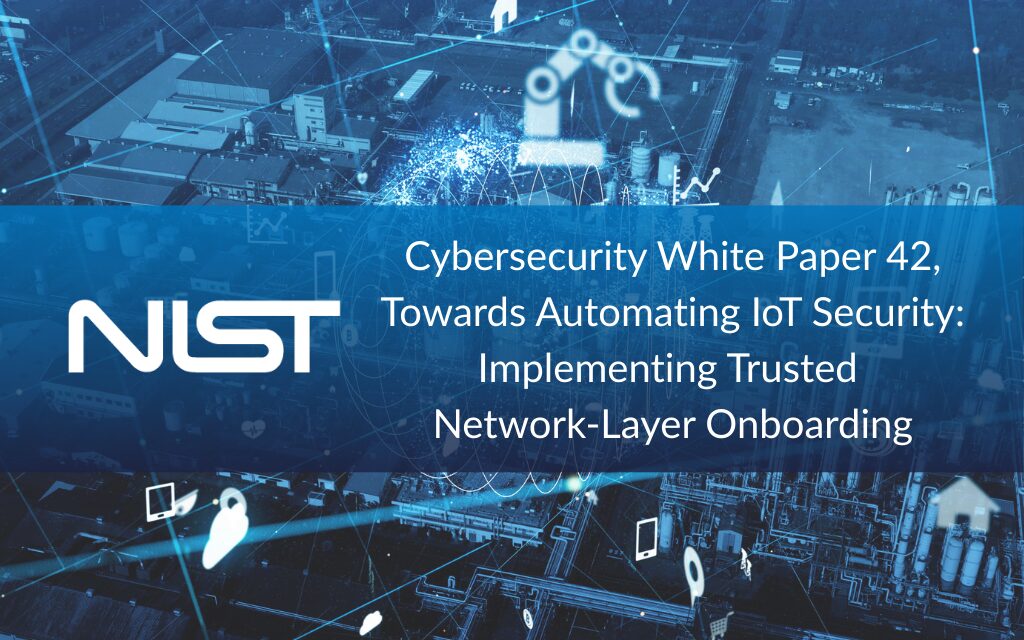“Toward Automating IoT Security”: Why It Matters and How KeyScaler Is Leading the Way
“Toward Automating IoT Security”: Why It Matters according to NIST and How KeyScaler Is Leading the Way
The global Internet of Things (IoT) ecosystem is growing at an unprecedented rate. It’s estimated that by 2030, there will be over 75 billion connected devices worldwide, up from approximately 12 billion in 2020. This massive growth presents significant opportunities, but it also exposes critical vulnerabilities, particularly when it comes to securing these devices.
An example of the vulnerabilities present in IoT goes back to the 2020 attack on a water treatment facility in Florida, where hackers gained access to critical systems via unsecured IoT devices. The attackers were able to manipulate the levels of chemicals being added to the water supply, potentially putting thousands of people at risk. This attack was part of a growing trend where threat actors exploit poorly secured IoT devices to access critical infrastructure. (You can read more about this incident in this CNN news article).
Unfortunately, the situation is only worsening. AI-driven attacks are rapidly outpacing humans’ ability to defend against them. These attacks can quickly analyze, adapt, and exploit vulnerabilities at a scale and speed that manual or traditional security measures simply can’t match. The need for automated, AI-powered security solutions has never been more urgent. The recent NIST Whitepaper, Toward Automating IoT Security, sheds light on the growing need for automation in IoT security frameworks and offers a roadmap for organizations looking to secure increasingly complex and dynamic device ecosystems.
Why IoT Security Automation Is Critical Now
Traditional IT-centric security models simply can’t keep pace with the scale, diversity, and mobility of modern IoT environments. Manual processes are error-prone, unscalable, and leave devices vulnerable. NIST’s publication emphasizes the importance of zero-touch provisioning, automated identity lifecycle management, and continuous trust assessment—core principles needed to protect against ever-evolving threats.
Without automation, organizations face significant risks including unauthorized access, data breaches, and compromised operations—especially in critical infrastructure, healthcare, automotive, and industrial sectors.
Purpose-Built for This Challenge: Device Authority KeyScaler
Device Authority’s KeyScaler platform was purpose-built to meet the very challenges outlined by NIST. It delivers end-to-end identity lifecycle automation for IoT devices—automating core tasks like secure onboarding, machine identity management, policy-driven access control, and continuous assurance leveraging a device’s SBOM.
Importantly, KeyScaler aligns closely with NIST’s recommendations by enabling:
- Zero-touch provisioning for rapid, secure device onboarding without the need for manual human processes
- Automated public key infrastructure (PKI) certificate issuance, renewal, and revocation – eliminating certificate-based outages and automating security responses for critical IoT devices
- Policy-based identity lifecycle management extending centralized machine identity security policy to unmanaged devices at the Edge
- Secure updates and data encryption at scale protecting sensitive data at rest and providing mitigation of device vulnerabilities via OTA updates
- The Power of AI by employing intelligent agents that can automate security responses at machine speed and surface critical IoT data through Microsoft CoPilot
In short, today KeyScaler offers a solution for NIST’s vision for automated IoT security.
Trusted by Industry Leaders
Leading technology innovators like Microsoft and CyberArk have recognized Device Authority as a key partner in securing IoT environments. Together, these companies enable a seamless, automated identity security infrastructure that meets the demands of enterprises worldwide. Our partnership announcement highlights how this collaboration brings IoT identity security to the forefront of digital transformation.
Join Us at RSA Conference in San Francisco
We’ll be at the RSA Conference in San Francisco this year, and we’d love to meet you in person to discuss how KeyScaler can help secure your IoT ecosystem. If you’re attending RSA, feel free to reach out to schedule a meeting—we’re pleased to show you firsthand how KeyScaler can automate your IoT machine identity security.
Try KeyScaler as a Service (KSaaS) for Free
Want to see firsthand how KeyScaler can transform your machine identity security for IoT/OT? Contact us today for a free trial of our Microsoft Award Winning Keyscaler as a Service (KSaaS) and experience the power of automated machine identity security, purpose-built for protecting critical IoT/OT assets. Available in Azure Marketplace.
